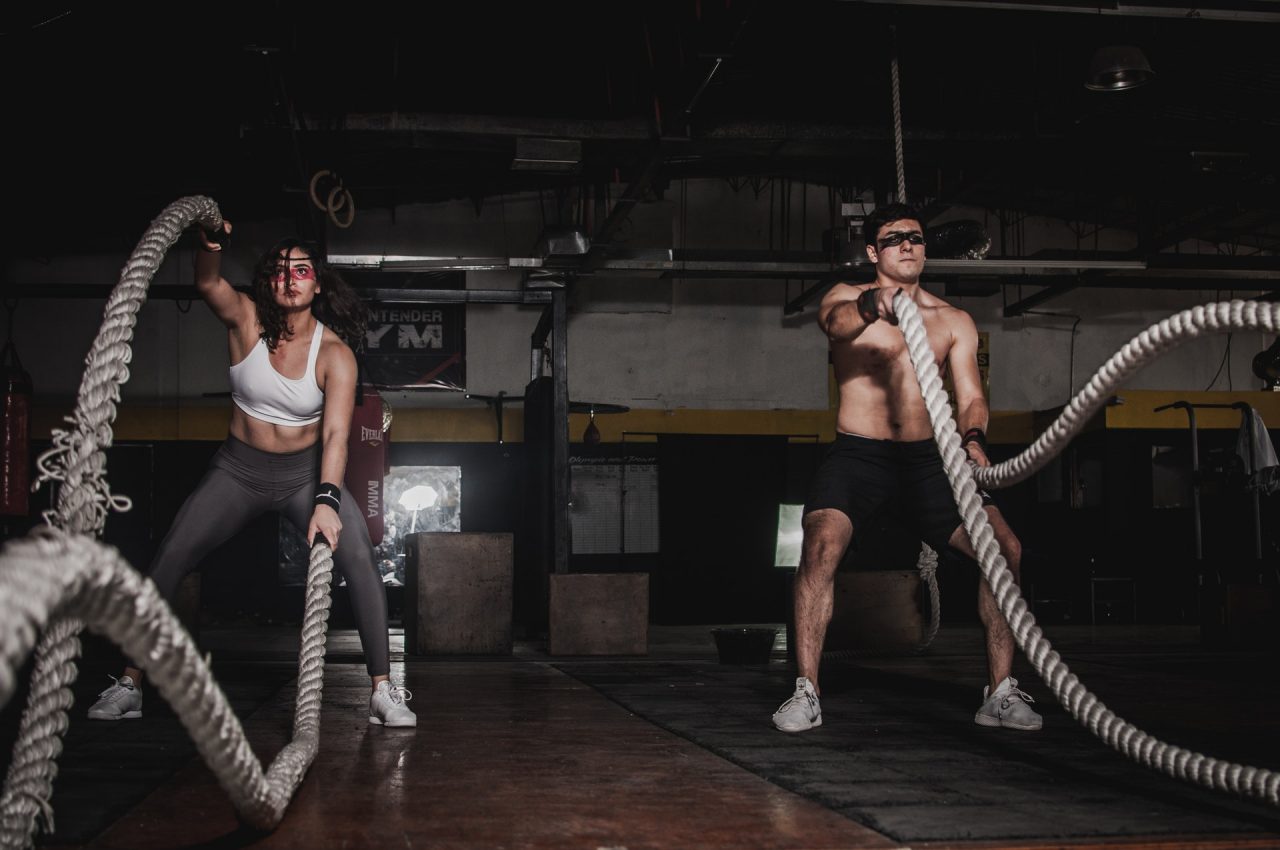Metabolic conditioning has been a popular phrase in the strength and conditioning field for the last twenty years. Basically it refers to getting athletes in shape to play their sport. There are a lot of great articles about analyzing the sport’s movement patterns and getting an idea of work to rest intervals to duplicate that in a conditioning program.
With many sports, the challenge comes in deciding what types of strength and conditioning tools to use in a metabolic conditioning workout. Athletes could run, but the concern there is that then athletes learn to run slowly so it could impact their speed development. Weight training done circuit-style (e.g. bench press for sixty seconds then rotate to the next exercise) is ineffective for strength/power/muscle mass development and conditioning. Sprinting can be used but we sacrifice speed and technique. The list goes on.
One tool that we can use are heavy ropes, sometimes called battle ropes, fitness ropes, or conditioning ropes. These are long, thick, heavy ropes that can be used as part of a strength and conditioning program. Heavy ropes tend to be 30-50 feet long and between one to two inches thick. They are also heavy.
Heavy rope exercises can involve the entire body. They can be performed rhythmically. These exercises can also be done for time (for example, perform it for sixty seconds nonstop). This means they are ideal metabolic conditioning tools especially for smaller team sports like baseball or basketball.
One of the most fundamental heavy rope exercises is the two-handed slam. This exercise has two variations, one is a total body exercise and one focuses more on just the upper body and the core.
Two-handed slams (total body):
For this variation, get in an athletic position. This means feet hip-width apart, chest out/shoulders back, hips pushed back into a quarter squat with the knees bent. Hands should be at your sides, each hand should hold a handle of the rope. Slight bend at your elbows.
From here, extend your hips and knees. As you do so, raise your hands (and the ropes) until they are parallel to the ground. From this position, quickly move back into the quarter squat, “slamming” the ropes back towards the ground. Repeat for the desired time.
Two-handed slams (upper body emphasis):
For this variation, get in an athletic position. This means feet hip-width apart, chest out/shoulders back, hips pushed back into a quarter squat with the knees bent. Hands should be at your sides, each hand should hold a handle of the rope. Slight bend at your elbows.
From here we’re only going to use the arms. While maintaining your quarter squat, raise the arms until they are parallel to the ground. From this position, using only the arms, “slam” the ropes back towards the ground. Repeat for the desired time.
Now, how to incorporate? Even in a smaller team setting, we’re unlikely to be gifted with a big enough budget to purchase a heavy rope and have the space to set it up for every athlete. This means that we have to take a station approach to conditioning where we rotate athletes through different stations so a small number of athletes are on the heavy rope at a time.
For example, we’re going to spend 30 seconds exercising and we’re going to have 10 seconds to move to the next station before the next station begins. So we might take the following approach for a team conditioning session:
Heavy rope slams
Jump rope
Core
Kettlebell swings
Just the above would take 150 seconds, repeat it six or seven times and you have a pretty good conditioning session. Now tweak the work:rest times to what you need for the sport and you can get a small team through a conditioning session.
If you have a larger team and limited equipment, consider expanding the list of exercises:
Heavy rope slams
Jump rope
Core
Kettlebell swings
Bear crawls
Lunges
Push-ups
Sprint to heavy ropes
As outlined above, this takes 310 seconds and would only need to be repeated 3-4 times but you’d have more stations built around each heavy rope, which would be ideal for a larger team.
Revised June 29, 2024

